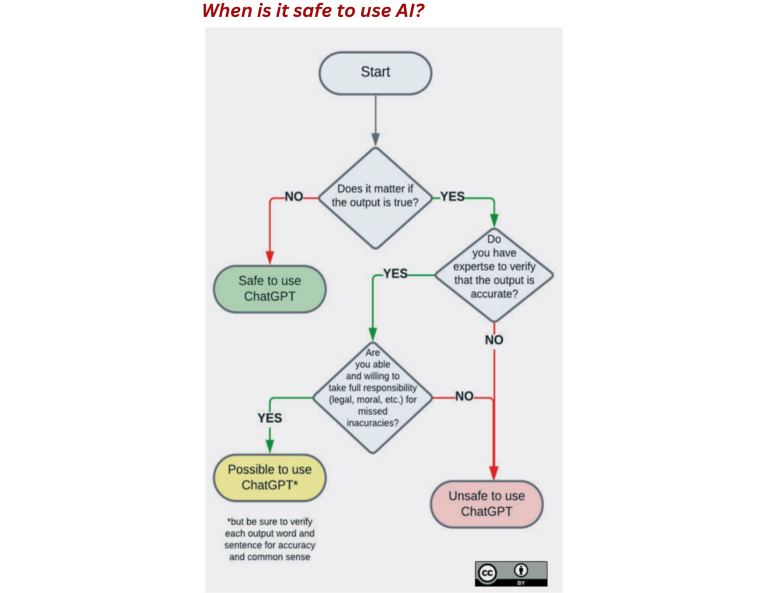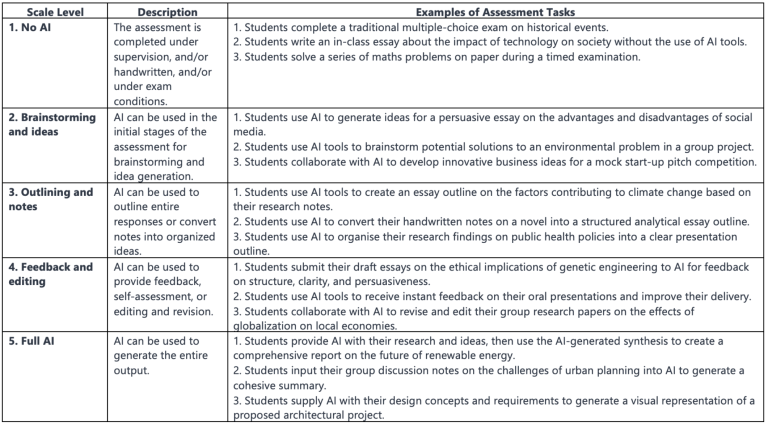The age of AI is here and that genie is not going back in the bottle. AI tools like ChatGPT as they exist today, are the worst versions of this technology we will ever have. They will continue to advance and become more sophisticated. As educators, we have a responsibility to prepare students for a future with AI tools by providing them with the skills and knowledge to navigate a rapidly changing landscape.
While the use of AI has raised concerns about academic dishonesty, we need to be careful feeding the stereotype narrative that they are cheating tools. Policing AI in classrooms will prove to be difficult as the technology rapidly evolves. Rather than focus our efforts on policing AI in the classroom, we should prioritize fostering student growth and innovation through open discussions about AI and its challenges, while stressing the importance of academic honesty. To achieve this, create a culture of academic integrity to promote fair evaluation, use AI detectors alongside other authenticity methods, and adapt assessment and assignment tasks.
Addressing Academic Integrity Regarding AI:
To promote academic integrity in your classroom:
- Set clear expectations and communicate consequences for academic dishonesty as it pertains to AI within your department, classroom, and on each assignment/assessment
- Rethink and use assessment methods that promote academic integrity, such as open-book exams and assignments that require application of knowledge
- Emphasize citing sources and attribution when using AI-generated content (for more info on citing AI, see APA Style Blog or AI in MLA Style)
- Prohibit AI use for independent assessments like exams/quizzes

Source: https://www.iesalc.unesco.org/
Using AI Detectors within your Classroom:
In addition to establishing academic integrity guidelines, faculty can use AI detectors when suspecting academic dishonesty. However, they should not rely solely on them as false positives can occur, including Turnitin’s AI detector (see this Washington Post article for more). Other methods such as comparing a student’s work to their previous work or having a conversation with the student should also be used. It is important to remember process over product; have students show their work throughout the writing process, completing a digital outline, rough draft, and final draft so the teacher can see the process and evolution of the piece. Faculty’s familiarity with the student’s writing may be a better detector than AI, but AI detectors can complement other approaches to provide a more complete picture of potential academic dishonesty.
Use the AI Assessment Scale ranges when integrating AI in the Classroom
When deciding to integrate AI into your assessments, you can consider using the AI Assessment Scale ranges, which range from “no AI” to “full AI,” to guide you.

Source: Leonfurze.com
Here are some additional resources to help navigate academic integrity in an AI classroom:
- Previous Blog Post with list of AI Detectors and Strategies for AI Generated Writing
- How to use Turnitin AI Writing Detection in Canvas
- Turnitin’s AI Writing Detection-Toolkit for administrators and instructors
- Understanding False Positives: Turnitin
- More information on Leon Furze’s AI Assessment Scale


